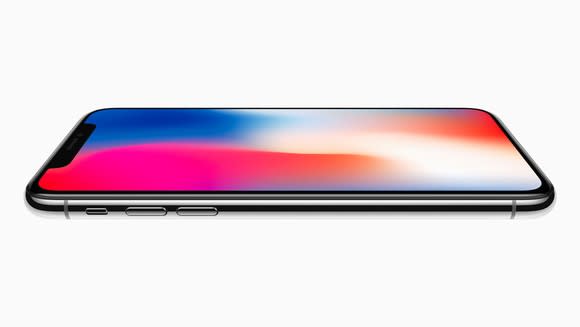No, Apple Isn't Underinvesting in Innovation
Analyst Toni Sacconaghi with Bernstein (via Barron's) recently suggested that Apple (NASDAQ: AAPL) might not be spending enough on research and development.
"While Apple's [research and development] spending is large, our benchmarking analysis suggests that Apple appears to still be [underspending] on R&D today, perhaps by a factor of 2x," the analyst wrote.

Image source: Apple.
The idea here is simple. Even though Apple's R&D spending is large in pure dollar terms -- the company spent $11.6 billion in R&D during its fiscal year 2017, and that figure has been growing through fiscal 2018 (the current year) -- Apple's spending as a percentage of its revenue might be too low.
Sacconaghi's analysis suggests that Apple should be spending more in the vicinity of 10% of its revenue on research and development, which is the source of the argument that Apple should be spending about twice as much on R&D as it currently does.
Here's why I don't think investors should necessarily buy that argument.
Apple runs an efficient business
There's no doubt in my mind that Apple will continue to invest more in R&D in the coming years. As Sacconaghi rightly points out, "Apple requires significant maintenance R&D to continue its expanded product and -- particularly -- services lineup."
In other words, for Apple to simply keep iterating on the products and services that it already sells, it needs to spend more. The reality is that employee salaries tend to increase with each year. And as products and services become more technologically complex, more engineering skill is required to build future iterations of those products.
Apple has consistently delivered successful iterations of its core products while also investing in new product categories (e.g. the Apple Watch, AirPods, HomePods) and services like Apple Music. And it has done so while maintaining its R&D spending at a relatively small percentage of its revenue (though that figure has risen over the last several years):
AAPL R&D; to revenue data by YCharts. TTM = trailing 12 months.
The Apple Watch is clearly a hit, and AirPods have proved quite popular. Even the HomePod, which hasn't quite been the commercial success that some had hoped, still represents an incredible feat of engineering. In future generations, when some of the issues around it are worked out (like Siri), it could go on to be a significant revenue source for the company.
It's important, though, to keep the following in mind: Apple's R&D spending continues to grow and, as Sacconaghi observes, it's growing faster than revenue (this is also obvious in the above chart).
Clearly, Apple isn't content to rest on its laurels and is aggressively investing in its future.
Methodical is the way to go
I posit that Apple wouldn't do itself any favors to go on a spending spree to quickly bring R&D to 10% of revenue. Remember that the higher a company's research and development is as a percentage of revenue, the lower its overall operating profit is.
The whole point of a business is to generate as much value for stockholders as possible. This means that management needs to be a good steward of its stockholders' capital and ultimately be thoughtful about its spending.
Apple's approach to R&D spending should be as follows: Spend whatever is needed to realize the company's product ambitions. Given that Apple is steadily increasing R&D spending (rather than just reporting one large step-function increase in such spending) -- and given that this spending is growing faster than revenue -- I don't get the impression that Apple is being timid about investing in its future.
If anything, it looks to me as if Apple sees some compelling long-term business opportunities ahead, and is quickly ramping up spending to try to capitalize on them.
More From The Motley Fool
Ashraf Eassa has no position in any of the stocks mentioned. The Motley Fool owns shares of and recommends Apple. The Motley Fool has the following options: long January 2020 $150 calls on Apple and short January 2020 $155 calls on Apple. The Motley Fool has a disclosure policy.

 Yahoo Finance
Yahoo Finance 
